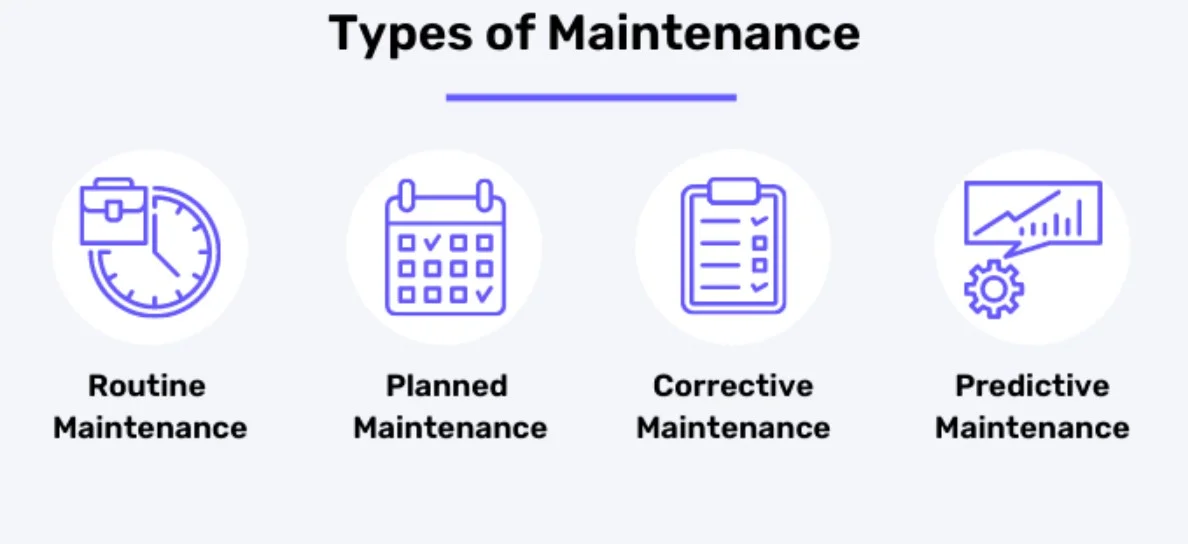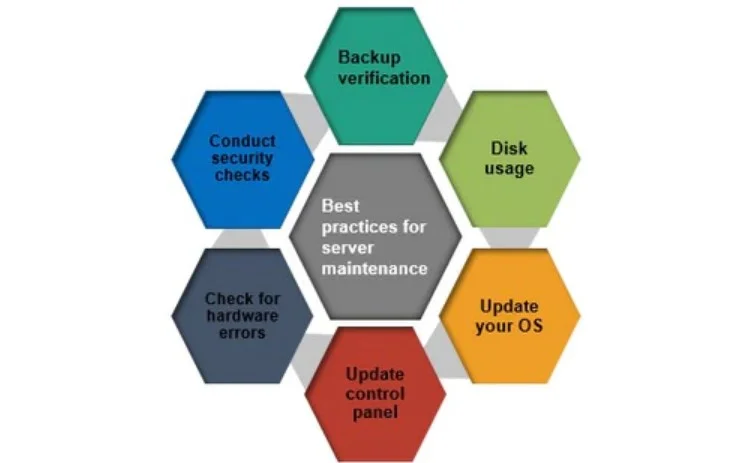Blogs
Dedicated Server hosting can play a pivotal role that this practice plays in the vitality of any IT infrastructure. Whether you’re orchestrating a small-scale operation reliant on a single server or overseeing a vast corporate network brimming with server nodes, comprehending the nuances of server maintenance is paramount.
In this comprehensive guide, we will delve into the intricate world of server maintenance, unraveling the intricacies that every IT professional needs to master to ensure the seamless functioning of their server systems.
Server Maintenance: Everything You Need To Know
What is Server Maintenance?
Server maintenance involves planned activities to ensure the efficient and reliable operation of computer servers. It encompasses tasks such as updating software, maintaining hardware components, conducting backups and performing security audits.
Regular server monitoring, log analysis and capacity planning are essential elements. Physical maintenance including cleaning and dust removal, is also part of server upkeep. Testing and validation are performed to verify proper functionality and documentation is maintained for troubleshooting and future reference.
Read more: Server Configuration: The Only Guide You Will Ever Need
Server maintenance is crucial for businesses and organizations to prevent downtime, data loss and security breaches while ensuring servers can meet growing workloads. This essential IT practice is typically managed by system administrators who schedule maintenance during low-usage periods to minimize disruption. It encompasses a comprehensive approach to keep servers running smoothly, secure and up-to-date, ensuring they continue to support critical functions without interruptions.
Why Is Server Maintenance Important?
Enhanced Performance:
Regular maintenance optimizes server performance by identifying and resolving issues that may slow down operations. This ensures that your applications and services run smoothly, minimizing disruptions for your users.
Security:
Security threats are constantly evolving. Server maintenance includes applying security patches and updates to protect against vulnerabilities. Neglecting this aspect can leave your server exposed to cyberattacks and data breaches.
Data Integrity:
Servers store critical data for your organization. Maintenance helps safeguard against data corruption or loss, ensuring that your information remains intact and accessible.
Cost Savings:
Proactive maintenance is often more cost-effective than reacting to server failures. Preventing issues before they become major problems can save your organization both time and money.
Compliance:
Many industries have specific regulations regarding data security and retention. Regular server maintenance can help ensure your organization remains compliant with these regulations.
What are the Different Types of Server Maintenance?
There are several types of server maintenance. Each type fulfills a different purpose.
Preventive Maintenance:
Preventive maintenance plays a crucial role in ensuring the reliability and longevity of server systems. By conducting routine inspections and cleaning procedures, administrators can identify and address potential issues before they escalate into critical problems.
Keeping hardware in good health through tasks like checking for overheating components or dust buildup, applying software updates to patch vulnerabilities and optimizing server configurations helps maintain peak performance and security. This proactive approach not only reduces the risk of unexpected server failures but also contributes to overall server efficiency.
Predictive Maintenance:
Predictive maintenance leverages the power of data analytics and advanced monitoring tools to predict when specific server components are likely to fail. By continuously collecting and analyzing performance metrics and historical data, IT teams can detect early warning signs of impending hardware or software issues.
This predictive capability allows for the strategic scheduling of maintenance activities such as replacing a failing hard drive before it crashes or upgrading software to address identified vulnerabilities. As a result, organizations can minimize unplanned downtime, reduce repair costs and ensure seamless server operation.
Corrective Maintenance:
Corrective maintenance becomes necessary when a server experiences an unexpected failure or malfunction. This type of maintenance involves promptly diagnosing the issue and taking appropriate actions to rectify it. Corrective maintenance may encompass hardware replacement, data recovery procedures or troubleshooting and fixing software-related problems.
While it is reactive in nature, an efficient corrective maintenance process is essential to swiftly restore server functionality and minimize disruptions to users, ensuring that the server environment remains resilient and reliable.
Scheduled Maintenance:
Scheduled maintenance is a planned and controlled approach to server maintenance, typically conducted during off-peak hours to minimize disruption to users and operations. These maintenance windows are essential for implementing critical updates, security patches and configuration changes that might require server restarts or temporary service interruptions.
By carefully scheduling such tasks, organizations can strike a balance between system availability and the need for continuous improvement, ensuring that server maintenance does not unduly disrupt business operations while keeping the infrastructure up-to-date and secure.

What are the Best Practices for Server Maintenance?
Here are some best practices to ensure effective server maintenance:
Create a Maintenance Schedule:
Creating a regular maintenance schedule is essential for ensuring the smooth operation of your systems. This schedule should encompass both preventive and corrective maintenance tasks. Preventive maintenance involves routine checks and actions that prevent issues from arising such as cleaning server components or optimizing software configurations.
Corrective maintenance addresses issues as they occur like fixing hardware failures or resolving software glitches. Sticking to this schedule helps prevent unexpected downtime and keeps your systems running efficiently.
Backup Data:
Regularly backing up critical data is a fundamental aspect of maintenance. This practice safeguards your organization against data loss due to maintenance activities or unforeseen failures. By routinely creating and storing copies of important data in secure locations, you can ensure that even in the worst-case scenario, your data remains accessible and intact. It is essential to establish a backup frequency that aligns with your data’s importance and update it as needed.
Apply Updates and Patches:
Regularly updating server software, operating systems and applications is crucial for maintaining a secure and efficient computer system. These updates provide essential patches to address security vulnerabilities, reducing the risk of cyberattacks and data breaches. Additionally, they often include performance optimizations, ensuring that your server operates at its best, leading to increased productivity and user satisfaction.
Document Everything:
Comprehensive documentation of maintenance activities is indispensable for effective server management. This documentation should include detailed records of maintenance dates, tasks performed, and any issues encountered during the process.
Having this information readily available aids in troubleshooting when problems arise and allows for better planning of future maintenance tasks. It also helps in tracking the history of your systems, which can be valuable for making informed decisions and implementing improvements.

Test Restorations:
Periodically testing data restoration processes ensures that your backups are reliable and can be successfully used in the event of data loss. This step is often overlooked but is crucial for verifying the integrity of your backup systems.
By simulating data recovery scenarios, you can identify any issues with your backup strategy and address them before they become critical. Regular testing provides confidence that your organization can recover crucial data swiftly and effectively, minimizing downtime and potential data loss.
Conclusion
In the realm of server maintenance, experts emphasize the criticality of a meticulous approach, leaving no room for compromise. Server maintenance is essential for optimizing performance, fortifying security, preserving data integrity, curbing costs and ensuring compliance.
Read more: The Future of Web Hosting: Trends to Watch in 2025
This guide serves as your beacon in this ever-evolving landscape, emphasizing that server maintenance is an ongoing commitment to the robustness and reliability of your IT infrastructure. By adhering to best practices, maintaining meticulous documentation and following regular schedules, you can ensure your servers operate at their zenith, ensuring unwavering excellence in your organization’s digital operations.
Muhammad Osama
Featured Post
Cloudflare Acquires Outerbase to Enhance AI Application Development
In a strategic move aimed at strengthening its platform for AI and database-backed application development, Cloudflare acquires Outerbase, a San Francisco-based developer database company. This acquisition, […]
IBM Acquires Hakkoda to Strengthen AI and Data Transformation Services
IBM acquires Hakkoda, a rapidly growing consultancy specializing in Snowflake and data modernization to bolster its data transformation and artificial intelligence capabilities. The deal positions IBM […]
What is HTTPS Port?
Table of Contents Complete Guide To HTTPS Port What is HTTPS? What Roles Does Ports Play in Networking? What is HTTPS Port or Port 443? 1. […]








